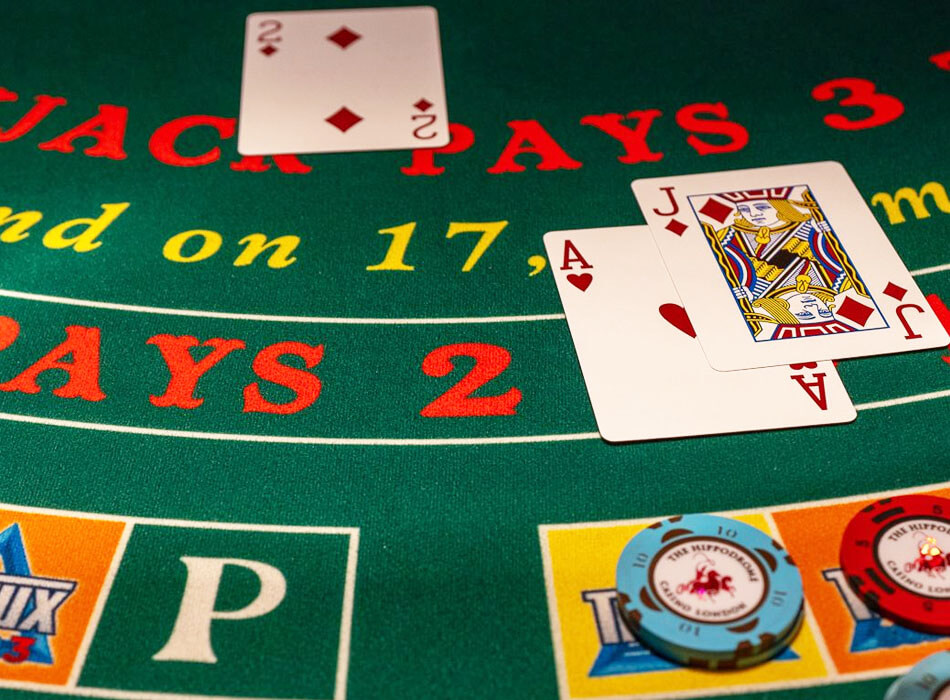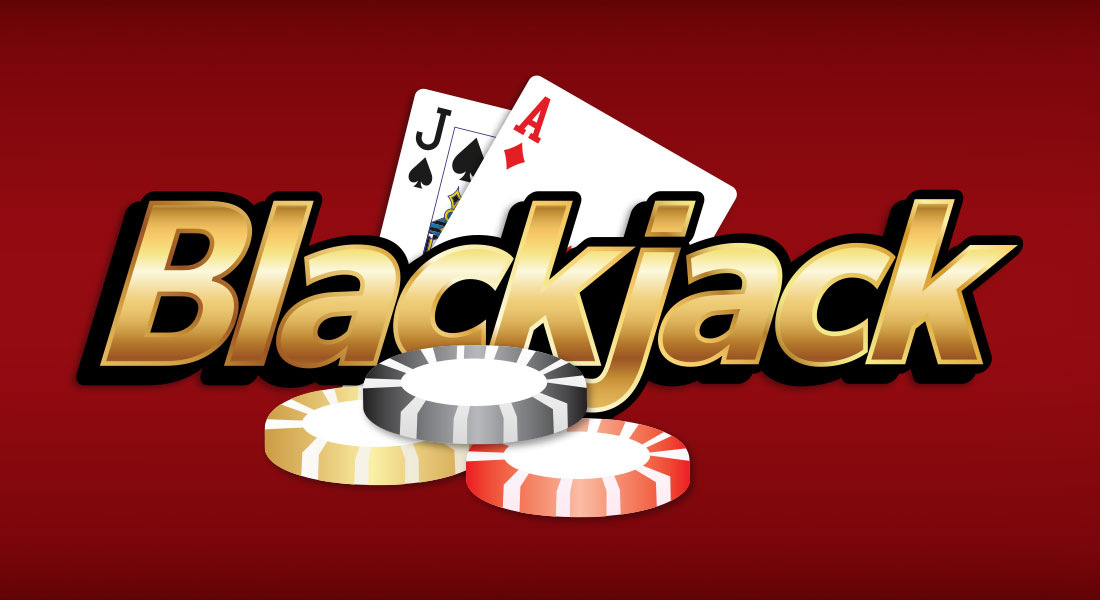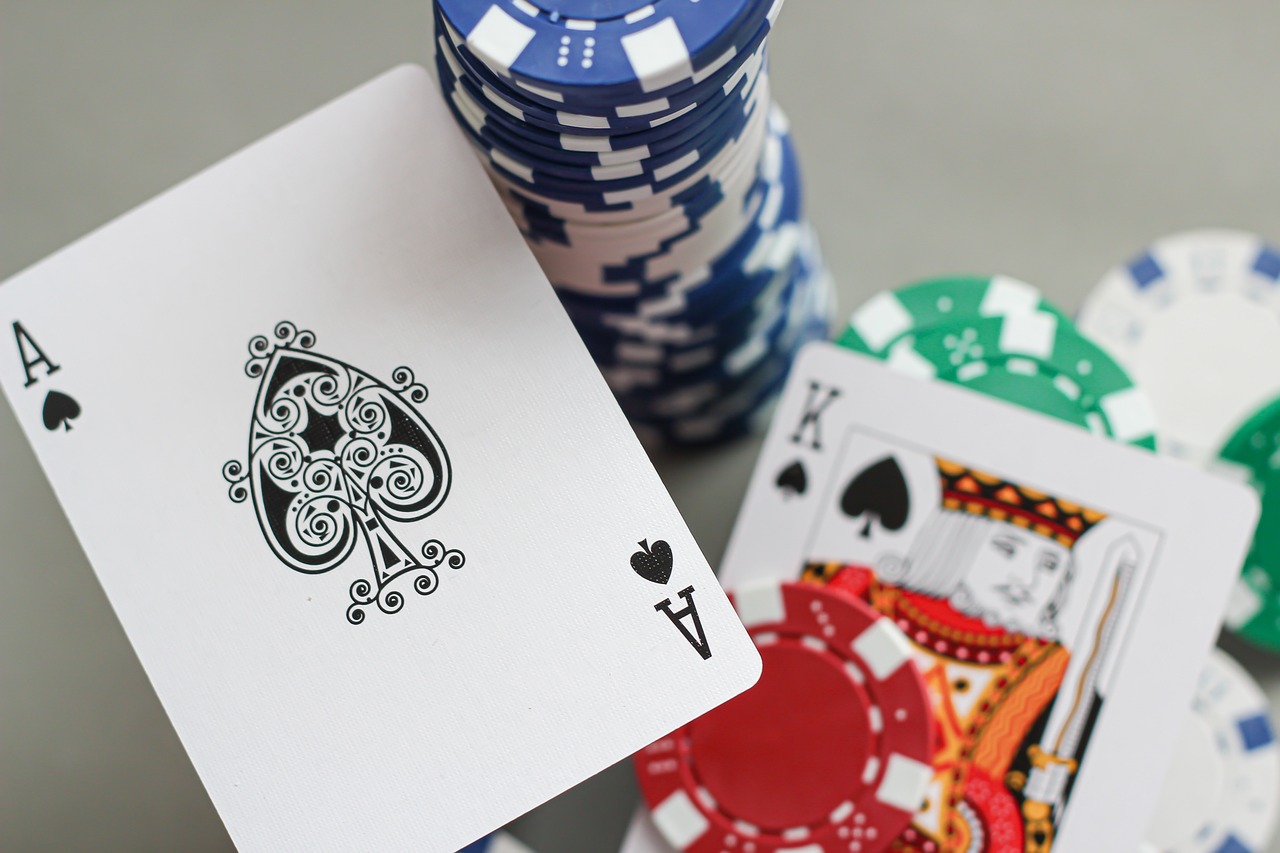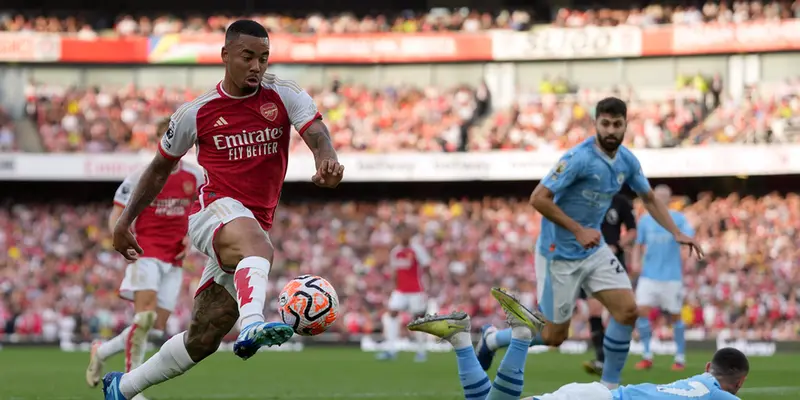Blackjack: Winning at the Casino
Blackjack, also known as 21, is one of the most popular casino games in the world. This classic card game has been around for centuries and continues to attract players from all walks of life. Whether you’re a beginner or a seasoned pro, the thrill of beating the dealer and winning big never gets old.
In this comprehensive guide, we will dive into the world of blackjack and provide you with everything you need to know to become a successful player. From the history and origins of the game to the strategies and techniques used by professionals, we’ve got you covered. So, let’s shuffle up and deal!
The History and Evolution of Blackjack
Blackjack’s roots can be traced back to Europe in the 17th century, where it was known as “Vingt-et-Un”, which translates to “twenty-one” in French. It is believed that the game originated from a combination of two other popular card games at the time – Chemin de Fer and French Ferme. These games involved players trying to reach a hand closest to 21 without going over.
As the game spread throughout Europe, it underwent various changes and adaptations. In Spain, it was known as “One and Thirty” and in Italy, it was called “Seven and a Half”. However, it wasn’t until the 18th century when the game made its way across the Atlantic to North America that it became known as blackjack. The name came from an early version of the game, where players were rewarded with a bonus payout if they held an ace of spades and a jack of clubs or spades.

Blackjack originated in Europe during the 17th century under the name “Vingt-et-Un,” which means “twenty-one” in French
In the early days of blackjack, it was not popular among casinos. Instead, it was primarily played in backroom games and private settings. It wasn’t until the 1930s that Nevada legalized gambling and blackjack became a staple in casinos. However, the game faced a major setback in the 1950s when card counting became a popular strategy used by players to gain an edge over the house. Casinos responded by implementing various rules and shuffling techniques to prevent card counters from winning big.
The 1960s saw another major change in the game with the introduction of the first basic strategy chart by mathematician Edward Thorp. This chart provided players with the optimal moves to make based on their hand and the dealer’s up-card. This laid the foundation for strategic play in blackjack and has since been refined and expanded upon by other experts.
Today, blackjack is one of the most widely recognized and played casino games in the world. It can be found in almost every land-based casino and has also made its way into the digital space with the rise of online gambling. With its long and rich history, it’s no wonder why blackjack continues to fascinate and entertain players of all ages.
The Origins of Blackjack
As mentioned earlier, blackjack’s origins can be traced back to Europe in the 17th century. However, there are some theories that suggest the game may have originated even earlier than that. One theory suggests that blackjack actually evolved from an ancient Roman game called “Ventiuna” (twenty-one), which involved players trying to reach a hand closest to 21 without going over.
Another theory points to a similar game played in Spain called “One and Thirty”, which was popular in the 15th and 16th centuries. This game also involved reaching a hand closest to 21, but with the added twist of players being able to bet on other players’ hands.
However, regardless of its exact origins, it is believed that blackjack was played in various forms throughout Europe before making its way to North America.
The Evolution of Blackjack
When the game arrived in North America, it underwent several changes and adaptations. In the early days, it was still known as “Vingt-et-Un” and was played in private settings and backroom games. However, as Nevada legalized gambling in the 1930s, blackjack began to make its way into casinos.
One major change that occurred during this time was the bonus payout for holding an ace and jack of spades, which gave the game its name “blackjack”. This rule was eventually dropped, but the name stuck.
Another significant change in the game came in the form of card counting, which became popular in the 1950s. Card counting is a strategy used by players to keep track of the cards that have been played and use that information to make strategic decisions. This technique gave players a slight edge over the house, leading casinos to implement various measures to prevent card counters from winning big.
In the 1960s, mathematician Edward Thorp published his groundbreaking book “Beat the Dealer”, which laid out the first basic strategy chart for blackjack. This chart provided players with the optimal moves to make based on their hand and the dealer’s up-card and has since been expanded upon and refined by other experts.
Since then, blackjack has continued to evolve and gain popularity, both in land-based casinos and online. Today, there are countless variations of the game, each with its own unique rules and twists. And with the advent of technology, players can now even play blackjack from the comfort of their own homes.
How to Play Blackjack: Rules and Gameplay
Before diving into strategies and techniques, it’s important to first understand the basic rules and gameplay of blackjack. The objective of the game is simple – beat the dealer by either getting a higher hand than them or having them go over 21. A hand that exceeds 21 is called a “bust” and automatically results in a loss.

The goal of the game is straightforward: defeat the dealer by achieving a hand higher than theirs or causing them to exceed a total of 21 points
The Basics: Card Values and Hands
In blackjack, the value of the cards is as follows:
- Numbered cards (2-10): Face value
- Face cards (Jack, Queen, King): 10
- Ace: Either 1 or 11, depending on the player’s choice
A hand is made up of two or more cards, with the goal being to reach a total of 21 or as close as possible without going over. If a player is dealt an ace and a 10-value card (10, Jack, Queen, or King), they have a “natural” or “blackjack” and will automatically win the hand unless the dealer also has a blackjack.
The Dealer’s Role
In blackjack, the dealer plays a crucial role in the game. They are responsible for dealing the cards, collecting bets, and enforcing the rules of the game. In most casinos, the dealer must stand on a hand totaling 17 or higher and must hit on a hand totaling 16 or lower.
How to Play
Now let’s break down the actual gameplay of blackjack. Here are the basic steps involved in playing a round of blackjack:
- Players place their bets before any cards are dealt.
- The dealer deals each player two cards, face-up, and deals themselves one card face-up and one card face-down.
- The player to the left of the dealer has the first turn to make a decision. They can choose to “hit” or “stand”.
- Hit: Receive an additional card to try and get closer to 21.
- Stand: Keep your current hand and end your turn.
- Players continue to make decisions until they either reach a total of 21 or decide to stand.
- Once all players have finished their turns, the dealer reveals their face-down card.
- The dealer must hit until they reach a total of 17 or higher.
- If the dealer busts, all players who did not bust automatically win.
- If the dealer does not bust, the player with a higher hand than the dealer wins.
- Ties result in a “push”, meaning the player’s bet is returned.
Special Moves
In addition to hitting and standing, there are a few other special moves that players can make in blackjack:
- Double Down: After receiving the initial two cards, players have the option to double their bet and receive one more card. This move is best used when the player has a strong hand (e.g., 9, 10, or 11) and believes they can beat the dealer with just one more card.
- Split: If a player’s first two cards are of the same value, they have the option to split them into two separate hands and play each hand individually. This requires an additional bet equal to the original and can only be done once per round.
- Insurance: If the dealer’s face-up card is an ace, players have the option to place an “insurance” bet, which pays 2:1 if the dealer ends up having a blackjack. However, this move is generally not recommended as it increases the house edge.
Basic Strategy: Tips and Techniques for Winning
Now that you understand the rules and gameplay of blackjack, let’s move onto some tips and techniques that will help you improve your chances of winning. These strategies are based on mathematical calculations and have been proven to be the most effective in the long run.

These strategies rely on mathematical calculations and have demonstrated their effectiveness over time
Understanding House Edge
House edge is a term used to describe the advantage that the casino has over players in a particular game. In blackjack, the house edge varies depending on the rules of the game and the strategy used by the player. The general rule of thumb is that the lower the house edge, the more favorable it is for the player.
In blackjack, the house edge can range from as low as 0.5% to as high as 2%, depending on the number of decks used and the specific rules of the game. This means that for every $100 wagered, the casino can expect to make a profit of $0.50 to $2.
Basic Strategy Charts
As mentioned earlier, the basic strategy chart was first introduced by mathematician Edward Thorp in the 1960s. The chart provides players with the optimal moves to make based on their hand and the dealer’s up-card. By following this chart, players can reduce the house edge to as low as 0.5%.
Here is an example of a basic strategy chart for a standard blackjack game:
To use the chart, simply find your hand in the left column and the dealer’s up-card at the top. The corresponding box will tell you the best move to make (hit, stand, double down, or split) based on the situation.
It’s important to note that the basic strategy chart is not a guaranteed way to win every hand. Rather, it is a guide to help players make the most statistically advantageous move in each situation.
When to Hit and When to Stand
One of the most crucial decisions that players must make in blackjack is whether to hit or stand. Here are some general rules to follow:
- Always hit on a hand totaling 8 or less.
- If you have a hard (no ace) hand between 12 and 16, hit if the dealer’s up-card is 7 or higher.
- If you have a hard hand of 17 or higher, stand.
- Soft hands (a hand with an ace) are a bit trickier. As a general rule, always hit on soft 17 or lower and stand on soft 19 or higher.
It’s also important to pay attention to the dealer’s up-card when deciding whether to hit or stand. For example, if the dealer has a 6 showing, they have a high chance of busting, so it may be wise to stand on a lower hand.
The Importance of Bankroll Management
In any casino game, it’s essential to have a proper bankroll management strategy. This means setting a budget for how much you are willing to spend and sticking to it. It’s easy to get caught up in the excitement of the game and keep playing even when on a losing streak, but this can quickly lead to big losses.
A good rule of thumb is to set a limit for how much you are willing to lose and walk away once you reach that amount. On the other hand, if you’re winning, it’s essential to know when to stop and not get too greedy. Remember, the house always has the edge, so it’s essential to manage your bankroll carefully.
Advanced Strategies: Card Counting and Other Methods
Now let’s move onto some more advanced strategies used by professional blackjack players. These techniques require a deeper understanding of the game and are not recommended for beginners.
Card Counting
Card counting is a technique used by players to keep track of the cards that have been played and adjust their bets accordingly. The idea behind card counting is that if a player knows which cards have already been dealt, they can make more informed decisions and potentially gain an edge over the house.
One of the most popular systems used for card counting is the Hi-Lo system. This method assigns a value of +1 to low cards (2-6), 0 to neutral cards (7-9), and -1 to high cards (10-Ace). As the cards are dealt, players keep a running count of the values and use that information to determine their next move.
It’s important to note that card counting is not illegal, but it is frowned upon by casinos. If caught, players may be asked to leave the casino or banned from playing blackjack altogether. Additionally, it requires a lot of practice and skill to be successful, so it’s not recommended for casual players.
Shuffle Tracking
Shuffle tracking is another advanced technique used by professional players to gain an edge in blackjack. This method involves keeping track of groups of cards as they are shuffled and predicting where those cards will end up in the deck. Players can then adjust their bets based on this information.
This technique requires a keen eye and excellent memory, making it difficult to master. It’s also not nearly as effective as card counting, so it’s not commonly used by players.
Progressive Betting Systems
Progressive betting systems involve adjusting your bet size based on whether you win or lose a hand. These systems claim to help players recoup losses and turn a profit, but there is no evidence to support these claims. In reality, they can quickly lead to significant losses and should be avoided.
Some popular progressive betting systems include the Martingale, Labouchere, and Fibonacci strategies. The idea behind all of these systems is to increase your bet after a loss and decrease it after a win. However, the flaw in this thinking is that each hand of blackjack is independent, meaning the outcome of one hand has no impact on the next.
Blackjack Variations: Exploring Different Versions of the Game
As mentioned earlier, there are countless variations of blackjack, each with its own set of rules and twists. While the basic objective of the game remains the same, these variations can add an extra layer of excitement and challenge for players. Let’s explore some of the most popular blackjack variations:
Pontoon
Pontoon is a British version of blackjack that is similar to the original game but has a few key differences. For starters, the dealer’s cards are dealt face-down, so players must rely on their own hand to guide their decisions. Additionally, a “pontoon” (ace and any 10-value card) beats a regular 21 hand, and ties result in a dealer win.
Spanish 21
Spanish 21 is another variation of blackjack that is played with a Spanish deck, which does not include any 10-value cards. This means that hands must reach 21 without the help of those cards. In addition, players have the option to surrender before the dealer checks for a blackjack, and late surrender is allowed.
Double Exposure
In Double Exposure, both of the dealer’s cards are dealt face-up, giving players more information to base their decisions on. However, this advantage comes at a cost – blackjacks only pay even money instead of the standard 3:2 payout.
Blackjack Switch
Blackjack Switch is a unique variation where players are dealt two hands instead of one and have the option to switch the top cards of each hand. This adds an extra layer of strategy as players must decide which cards to switch to create the best possible hands.
Super Fun 21
Super Fun 21 adds some fun twists to the game of blackjack, including allowing players to double down on any number of cards and a payout of 2:1 for a hand totaling 20 with six or more cards. However, these advantages come at a cost – blackjacks only pay even money.
Online Blackjack: Playing in the Digital Age
With the rise of technology, it’s no surprise that blackjack has made its way into the digital world. Online casinos now offer a wide variety of blackjack games, from classic versions to unique variations. Let’s explore some of the benefits and drawbacks of playing blackjack online.
Convenience and Accessibility
One of the biggest advantages of online blackjack is the convenience and accessibility it provides. Players can access their favorite games from the comfort of their own homes, and they are not confined by casino operating hours. Additionally, online casinos offer a wider range of betting options, making it easier for players to find a game that fits their budget.
Bonuses and Promotions
Unlike land-based casinos, online casinos often offer bonuses and promotions to attract new players and keep existing ones. These bonuses can range from free spins to deposit matches and can significantly increase a player’s bankroll. However, it’s important to read the terms and conditions before accepting a bonus, as there may be restrictions and wagering requirements involved.
Lack of Social Interaction
While the convenience of playing blackjack online is undeniable, it does lack the social interaction found in land-based casinos. For some players, this may not be an issue, but for others, the camaraderie and excitement of playing with others at a real table cannot be replicated through a screen.
Mastering the art of blackjack not only involves understanding the game’s strategy and odds but also requires discipline and patience. By implementing sound tactics and managing risks wisely, players can increase their chances of success and enjoy a thrilling experience at the casino.











Post Comment